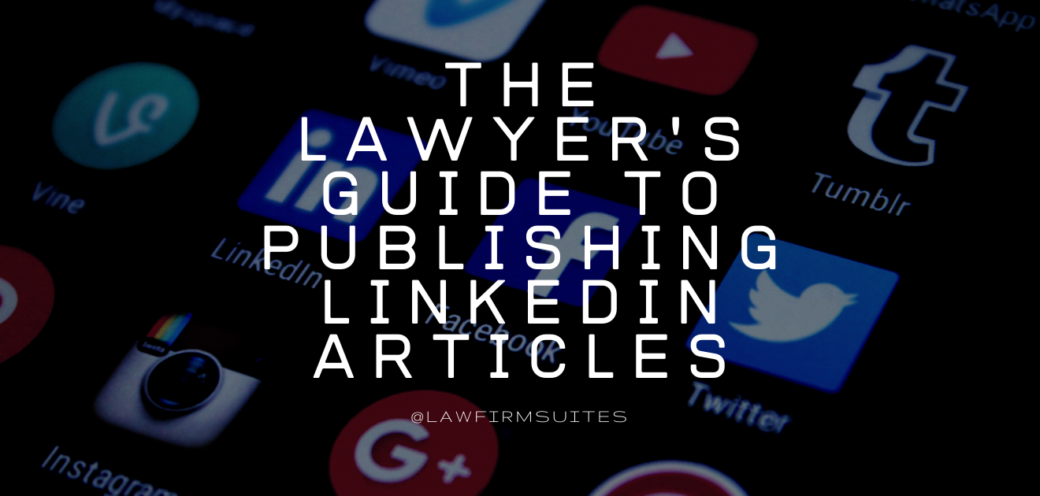LinkedIn has become one of the most important social media platforms for lawyers. The ABA Legal Technology Survey, which was published in 2016, indicates that more than 93 percent of legal professionals have a LinkedIn account. The social network hosts more than 500 professional profiles, which translates into lots and lots of networking connections and career opportunities.
Attorneys don’t simply sit back and keep track of the news. No, they publish great content to reach high-value audiences and, most importantly, get exposure for themselves. If you’d like to get serious about LinkedIn, use these tips for successful content marketing. You’ll differentiate your firm as more knowledgeable and credible.
Source: https://www.pexels.com/photo/apple-applications-apps-cell-phone-607812/
Don’t Write Question Posts
If people leave comments on your LinkedIn page, they’re eager to engage with you. Think about it for a second. Leaving a comment takes much more time than just liking or sharing something. Maybe you want to write a post to answer the question of your fellow group members. You’re determined to cover the most important questions, such as Who, What, When, Where, Why, etc. Stop right there. Question posts don’t generate high engagement on LinkedIn.
Posts, where the headline poses a question, tend to perform poorly. So, even if you want to open your LinkedIn post with a bang, you must refrain from action. You’re better off writing a How-To post. People want to know how to do things and if you teach them, you’ll surely get lots of traffic. Give your audience general advice that’s both helpful and educational. Here are some examples:
- How to divide assets in divorce
- How to be a better lawyer
- How to bring cloud computing to a law firm
- How to prove fault in a personal injury accident
- How to avoid identity theft when shopping online
Take the time to understand your audience and consider their wants and needs. Only publish carefully and researched content.
Take the Inverted Pyramid Approach
News stories are organized using the inverted pyramid approach. The most important information is included at the beginning of the writing piece so that readers can determine if they want to read the entire article. The first 2 or 3 sentences should include the conclusion. Put the most relevant elements first and continue with supporting or explanatory information. By simply changing the style of communication, you can grab your audience’s attention.
Does the Inverted Pyramid Work for Web Writing?
There’s unlimited space on an Internet page. The problem is that site visitors have a limited attention span and have trouble focusing on something for a long time. This is why it makes sense to use the inverted pyramid approach. People don’t read every word of a LinkedIn post. They skim the text to understand what it’s about. If you want to draw readers down the page, make sure the main points are listed in the first paragraph.
The inverted pyramid approach is fairly common in law blogging. Lawyers get to the point quickly and neatly package the content for efficient consumption. Just so you know, it can save your writing. Don’t spend too many sentences on friendly chatter. Let readers people know from the very get-go what you’re writing about. It’s not a good idea to delay information. Why? Because people will immediately leave your LinkedIn page.
Thomas Hillard, Associate Director of Marketing, Content, and Communications at TopWritersReview, draws attention to the fact that “great writers craft paragraphs that include a topic sentence. These sentences unify the content and direct the order of the sentences, telling the reader what will be discussed and how the paragraph will discuss it.” Write the topic sentence near the beginning.
Longer Isn’t Always Better
When you write your LinkedIn article, don’t make it too long. The post shouldn’t have more than 1,000 words. It will be hard to read and it won’t do you any good. Try to keep the LinkedIn article between 500-700 words. Short, easily digestible texts are great for conveying a ton of information. Surprising as it may seem, a 500-word text performs better than a 2,000-word one. The point is that you shouldn’t worry if you don’t have enough time.
As a rule, long blocks of text intimidate website visitors who are used to scanning news and social media. If your LinkedIn article happens to be too long, break it into different parts. The result is that you get more articles. Since you can’t dive too deep into the subject matter, add hyperlinks to other articles. Your replies needn’t be lengthy. If anyone comments on your post, give a short reply. This will increase the visibility of your LinkedIn account.
Source: https://burst.shopify.com/photos/judge-gavel-and-law-books?q=lawyer
Make Your Legal Posts Visible with Images and Infographics
People should be able to visualize the law. In this sense, it’s recommended to include images in your LinkedIn articles. Words are your most important tools, but they’re not the only ones. Adding images instantly makes the post more eye-catching. People love photos. Actually, they want to see informative posts that feature a great photo.
In addition to images, you can use:
- Infographics
- Charts
- Diagrams
These elements illustrate factual and legal points. By incorporating visuals into your legal writing, you can help people visualize the law. For example, if you try to explain a statute or regulation, you can use a chart to help readers better understand the concept. On the other hand, if you want to draw attention to the passage of time, you can use a timing diagram, which will clearly show the interactions.
Share Other People’s Content
You can publish original content on LinkedIn or you can share other people’s content. But why would you want to do that? Because it will add value to your network and help you develop relationships with influencers within the legal community. To make sure you don’t get into trouble, ask for permission. If you want to share what an attorney has posted on their LinkedIn page, talk with them and make sure it’s okay.
People love to read news and interesting studies. Legal publications won’t mind if you publish some articles on your social media account or on your firm’s blog. You can share data from one of the following:
- Trade publications
- Counsel publications
- Business publications
Each one has strong and weak points. All you have to do is add the URL and maybe a compelling call-to-action. if you search the Web, you’ll discover that there are thousands of legal magazines, publications, and ezines. Examples include ABA Journal Magazine, The Lawyer Magazine, and Legal Business Magazine. Take your pick.
To conclude, LinkedIn is incredibly valuable to lawyers. Publishing valuable content is what you need to do if you want to become an authority in the legal community. Take the time to write thoughtful articles that highlight your expertise while putting you in front of potential clients.
About The Author
Kristin Savage nourishes, sparks and empowers using the magic of a word. Along with pursuing her degree in Creative Writing, Kristin was gaining experience in the publishing industry, with expertise in marketing strategy for publishers and authors. Now she had found herself as a freelance writer. Kristin runs her own FlyWriting blog. You can find her on Facebook.




